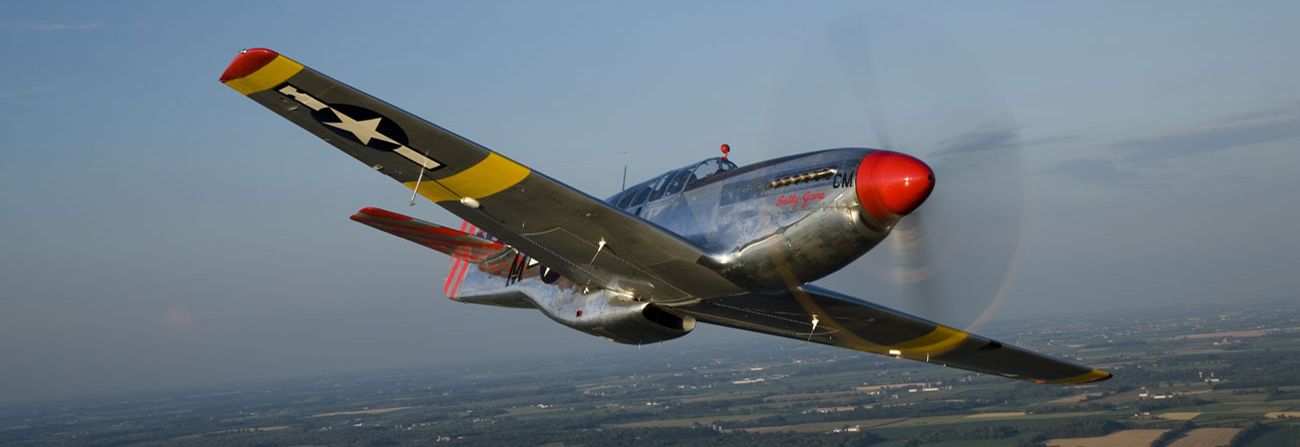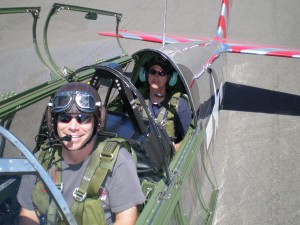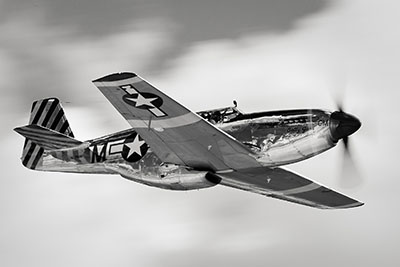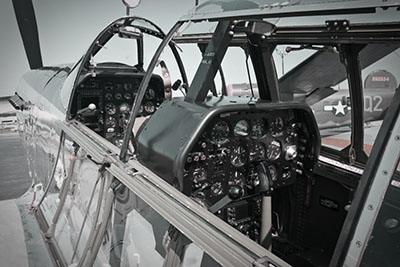These former fighter aircraft were used as a high speed transport and gave the Mustang pilot the ability to share the joy of flying the world’s greatest fighter with their trusted ground crews.
The P-51 was developed by North American starting in early 1940 to satisfy a British need for a long range escort aircraft. The prototype first flew on the 26th of October 1940, and was designated NA-73X. The aircraft was fitted with an Allison V-1710-F3R and was fitted with two .50 cal machine guns in the lower fuselage, and two .30 cal machine guns in each wing. The British ordered 620 of the aircraft and designated them the Mustang I. The aircraft entered service starting in February 1942.
The United States Army Air Force evaluated 2 Mustang I’s that they designated XP-51’s. They placed an order for 500 of the aircraft fitted with two .50 cal machine guns in each wing, and hard points for two 500 pound bombs under the wing. They used the aircraft in the dive bomb role, and designated them A-36A Apaches before delivery.
The P-51A was brought into production when the USAAF replaced the 1,150 horsepower Allison V-1710-F3R with the uprated 1,200 horsepower Allison V-1710-81. There were 310 P-51A Mustangs built, with 50 of them going to the RAF as Mustang II’s.
Throughout 1942 Rolls Royce and North American both tested versions of the P-51 with Merlin engines rather than the Allison engines that the early models were using. Rolls Royce tested their version of the Merlin rated at 1,705 horsepower. These aircraft were designated Mustang Mk X. North American tested 2 aircraft with the Packard built Merlin V-1650-3 rated at 1,298 horsepower. The aircraft were designated XP-51Bs. The first flight was on November 30th, 1942. The successful testing led to North American switching to the Packard built Merlin for all further P-51 production.
Starting in 1943 North American started with production of 1,988 P-51Bs from its Inglewood, CA factory. They built an additional 1,750 aircraft from their Dallas, TX facility and designated them as P-51Cs. Starting with the P-51C-5 production block, North American switched to the more powerful Merlin V-1650-7 engine it was rated at 1595 horsepower.
P-51C 42-103293 “Betty Jane” was built by North American at its Dallas Facility. When the aircraft was rebuilt in 2002 and 2003 it was built as a 2 seat version of the P-51C. The TP-51C was a field modification that added a second seat with a full second set of controls and instrumentation that could be used for training purposes. There were at least 5 TP-51Cs that were built during WWII for training purposes, and VIP transport.















